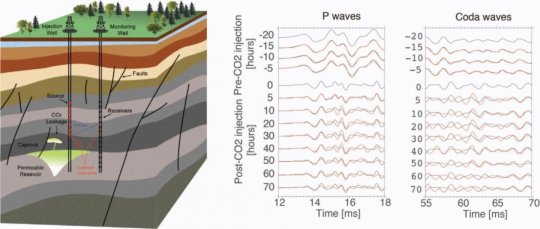[ad_1]
Pumping carbon dioxide into the ground to remove it from the atmosphere is one way to lower greenhouse gases, but keeping track of where that gas is, has been a difficult chore. Now, a team of researchers from Penn State and Lawrence Berkley National Laboratory are using previously ignored seismic waves to pinpoint and track the gas clouds.
“We usually don’t look at coda waves, we usually throw them out,” said Tieyuan Zhu, professor of geophysics, Penn State. “If we look at a carbon dioxide plume underground with P waves we don’t see any change in shape, but if we use the late-arriving waves, the coda waves, we see a change.”
P waves are the fastest seismic body waves that pass through the Earth after an earthquake or explosion. S waves are slower body waves. Coda waves come later and are disorganized, but they can reveal where gases are stored in the ground, because the combination of rock and gas alters the waves.
When carbon dioxide is stored underground, it is pumped over a mile deep into geological spaces and is usually over 150 degrees Fahrenheit and at high pressure. Ideally, researchers would like the gas to stay at that depth forever. Current monitoring methods are difficult, expensive and can only be done periodically. Tracking the plumes with coda waves also has the benefit of better estimation of the total amount of gas in the reservoir, rather than just a local region.
“Current technology is very expensive,” said Zhu. “We are looking for an economical method to monitor the gas.”
Standard monitoring now is done at six-month or yearly intervals. The researchers hope that by using permanent seismic sources and coda wave analysis they can monitor much more frequently — days or weeks.
“Our future experiments would test real-time monitoring systems,” said Zhu. “In that way, we could detect small changes in the gas plume. Chris Marone, professor of geosciences at Penn State, also is working on the project. Work at Lawrence Berkeley National Laboratory was carried out by staff scientists Jonathan Ajo-Franklin, and Thomas Daley.
Story Source:
Materials provided by Penn State. Note: Content may be edited for style and length.
[ad_2]















